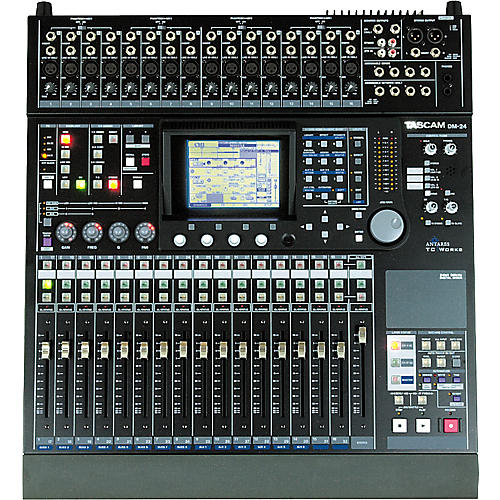Breaking News
Ddx3216 Software Download
суббота 12 января admin 88
Can a digital console at such a low price really deliver on features and audio quality? Despite the proliferation of computer-based studios, few of them can manage without a mixer, and in these days of recallable, resetable everything, digital mixers tend to be more attractive than their analogue counterparts. Behringer's offering in this department provides a surprisingly comprehensive feature set at a startlingly low price. The mixer can handle up to 32 channels, it has 16 internal busses and eight aux sends as well as dynamics and gates plus four-band parametric EQ on every channel (but not the busses). Programma dlya rascheta shesteren 1.
DDX3216 was manufactured in compliance with the ISO9000 certified management system. 1.2.3 Open architecture As the operating system (firmware) of your DDX3216 is stored in a flash ROM, you can update the OS at any time from a personal computer or PC card.
It also includes four onboard effects processors based on the Behringer Virtualizer algorithms. The console also has moving-fader automation via full-length 100mm Alps faders, snapshot automation and I/O expansion via two card slots. Up to 128 snapshots can be saved, a snapshot comprising virtually all the console parameters other than the analogue gain settings. 24-bit Crystal converters (delta-sigma, 128x oversampling) are used throughout and the majority of the circuitry is surfacemount. Sample rates of 44.1kHz and 48kHz are supported while the operating firmware for the mixer is held in flash ROM so that it can be updated from a PC if necessary.
As with all assignable digital mixers, the I/O that you see on the outside is somewhat different from the internal bussing structure, so while the console may indeed have 16 internal busses, it only has two main analogue outs, plus four more assignable outputs, unless you add some more I/O via the card slots. In this respect, the output arrangement is very like that of the smaller Yamaha mixers and recorders. The I/O expansion options are for 16-channel ADAT and TDIF, as well as eight-channel AES-EBU, with all but ADAT being connected via D-Sub multi-pin connectors. An external XLR connector box accompanies the AES-EBU interface, though no expansion cards were supplied with the review sample. There's no analogue expansion option, so it's my guess that the mixer is aimed primarily at the current crop of hardware recorders (ADAT tape or most current hard disk models) that can be fitted with digital I/O, or at computer systems with ADAT I/O.
There's also coaxial S/PDIF I/O where the input is automatically sample rate converted to avoid clocking problems. Routing is fixed to channels 13/14 so, when switched on, it replaces any existing sources. The digital out always follows the main stereo mix and may be 16, 20 or 24-bit with or without noise-shaped dither. Rear-panel word-clock input and output BNC connectors make integration with a more complex digital system possible and there's also a balanced SMPTE input on an XLR. MIDI In, Out and Thru connectors are fitted along with an RS232 port for connection to a PC for data exchange and backup.
Mix data may also be stored to an optional PCMCIA card via a slot in the front edge of the mixer and, using a suitable card reader, data may also be transferred to and from a PC that way. The 32 channels are serviced by 12 mic/line inputs and four line-only inputs making it possible to input up to 16 sources without requiring an expansion card. Phantom power is switchable in two banks covering channels one to eight and nine to 12. Each of the (balanced) mic/line channels includes an insert point prior to digital conversion as well as a 20dB Pad switch with Signal and Clip LEDs to monitor input stage activity. A small gain trim pot completes the input stage, after which the signal is digitised and routed to the floating-point DSP mixing engine.
The choice of floating-point processing (powered by four SHARC DSP chips) is interesting because it means the mixer can be designed with a huge internal dynamic range. In a properly designed floating-point system, provided that the input and output levels are OK, there should be no possibility of internal clipping, even at radical EQ settings. Before leaving the top section of the mixer, where the majority of the sockets and input controls are located, I should also mention the Phones out, with separate level control, and the control-room level control (with 'Mon -20dB' button above the master fader) plus two-track playback switching. Monitor source switching is possible via the LCD and includes mono/stereo switching.
Connection for a stereo recorder is via unbalanced RCA phono connectors on the top panel, where there's also a button for routing the two-track output to mixer inputs 15 and 16 for those occasions when you want to use a recorded source as part of a mix. The operational paradigm of the mixer is sufficiently similar to that established by Yamaha that existing Yamaha O-series owners should have little problem finding their way around the DDX3216. The most obvious initial differences are that some aspects of the routing are arranged differently and there's no EQ or dynamics on the 16 Groups, but in other areas there are operational improvements over most competing lower-cost digital mixers, such as the rotary encoders in each channel strip with 'ring of LEDs' read-out, separate compressors and gates that can be used simultaneously, full-length faders and the sheer number of possible inputs and busses. There are also four effect processors rather than the usual two. One operational nicety that impressed me very early on was the use of the context-sensitive prompts that appeared whenever I tried to do something that might not be entirely obvious — such as when copying settings from one channel to another.
